SIMPLE STEPS: A Comprehensive Model of Suicide Assessment
This online learning opportunity presents an evidenced-based, comprehensive model of suicide assessment. Issues of working with a diverse clientele, clinical supervision, documentation, and treatment planning will be highlighted in the context of comprehensive suicide assessment.
Suicide Assessment and Treatment Planning: A Strengths-Based Approach
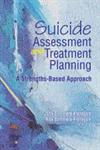 by John Sommers-Flanagan and Rita Sommers-Flanagan
by John Sommers-Flanagan and Rita Sommers-Flanagan
In this practical guide, John and Rita Sommers-Flanagan present a compassionate and straightforward model to assist children, adolescents, and adults in distress while also helping counselors to focus on their own mental health and wellness.
Crisis Intervention Ethics Casebook
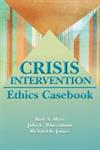 by Rick A. Myer, Julia L. Whisenhunt, and Richard K. James
by Rick A. Myer, Julia L. Whisenhunt, and Richard K. James
Drs. Myer, Whisenhunt, and James offer a new operational approach for integrating ethical decision-making in crisis intervention. Students and practitioners will learn ethical decision-making skills to de-escalate crisis incidents and how best to provide support to individuals experiencing crisis.
Clinical Military Counseling: Guidelines for Practice
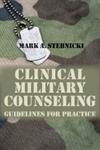 by Mark A. Stebnicki
by Mark A. Stebnicki
Active-duty service members, veterans, and their families face psychological issues that are not experienced in the same way by the general population. This tactical guide provides skill-building techniques for assessment, diagnosis, and treatment of the medical and psychosocial aspects of military health. Topical coverage includes contemporary military culture; the neuroscience of military stress and trauma; suicide; chronic illness and disability; and blast and traumatic brain injuries.
The Counselor and the Law: A Guide to Legal and Ethical Practice, 8th Edition
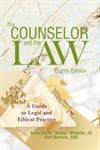 by Anne Marie “Nancy” Wheeler and Burt Bertram
In this latest edition, Nancy Wheeler and Burt Bertram provide critical risk management strategies and a legal/ethical decision-making model. New or updated topics include matters surrounding informed consent, current case law on duty to warn/protect and issues surrounding suicide in college/university settings, and electronic records and ransomware concerns.
by Anne Marie “Nancy” Wheeler and Burt Bertram
In this latest edition, Nancy Wheeler and Burt Bertram provide critical risk management strategies and a legal/ethical decision-making model. New or updated topics include matters surrounding informed consent, current case law on duty to warn/protect and issues surrounding suicide in college/university settings, and electronic records and ransomware concerns.
Introduction to Crisis and Trauma Counseling
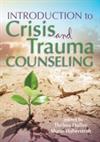 Edited by Thelma Duffey and Shane Haberstroh
Edited by Thelma Duffey and Shane Haberstroh
This text integrates evidence-based models and best practices with relational-cultural theory, which is responsive to the many forms of traumatic stress and tragedies that clients experience. Readers will gain vital skills as they learn real-life approaches to crisis work with individuals, families, communities, students, military personnel, violence survivors, and clients who are suicidal.
Critical Incidents in School Counseling, Third Edition
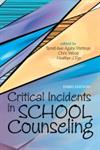 Edited by Tarrell Awe Agahe Portman, Chris Wood, and Heather J. Fye
Edited by Tarrell Awe Agahe Portman, Chris Wood, and Heather J. Fye
Critical Incidents in School Counseling explores contemporary case scenarios that arise in school counseling with children and adolescents. Topics are organized around the CACREP Standards and issues explored include trauma, drug use, pregnancy, cyberbullying, suicide, gangs, parental conflicts, sexual orientation, third-culture students, student career development, and ethical and professional dilemmas.
JOURNAL ARTICLES
Journal of Counseling & Development
Counselor Education and Supervision
Journal of Multicultural Counseling and Development